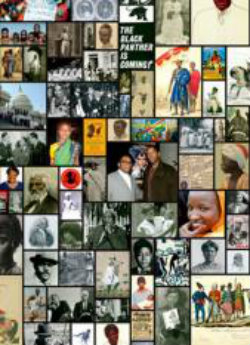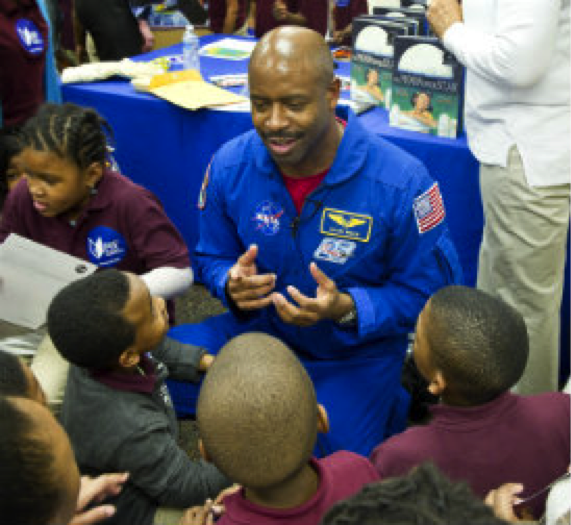MiddleWeb
Updated and expanded January 2016
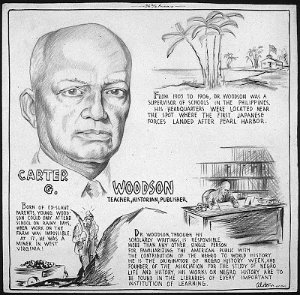 A century and a half after Abraham Lincoln signed the Emancipation Proclamation, students in 2016 will continue a 90-year tradition of studying African American history during February.
A century and a half after Abraham Lincoln signed the Emancipation Proclamation, students in 2016 will continue a 90-year tradition of studying African American history during February.
Historian Carter G. Woodson, along with colleagues at the Association for the Study of African American Life and History (ASALH), established Negro History Week in 1926. With mobs still lynching African Americans every year (335 deaths reported in the 1920’s, of the total 3959 from 1877 to 1950 reported by the Equal Justice Initiative in 2015) and a surge of race riots sweeping the country, Woodson wanted to provide a counterpoint to the racist perspectives that dominated America.
Initially observed in black schools, churches and social organizations, the event grew into Black History Month (also known as African American History Month) with President Gerald Ford’s signature in 1976.
Since 1928 the ASALH has provided a theme for the annual observance. The 2016 theme is “Hallowed Grounds: Sites of African American Memories.” Looking over the thematic titles can provide students with a sense of the concerns of African Americans over the decades.
For example, the theme from 2006, “Celebrating Community”, can help students understand how African Americans, shut out of local and national organizations, developed their own fraternal, civic and social institutions, some of which fought violence against blacks — including the National Association for the Advancement of Colored People (NAACP) organized in 1909. In 2014, ASALH celebrated the fiftieth anniversary of the passage of the Civil Rights Act of 1964. Find articles, videos and photos on the Act at History.com. Another organization, BlackPast.org, celebrated Black History Month 2014 will a large collection of African American Firsts.
A look at Selma 1965 and 2015
In 2015, many media outlets recognized the 50th anniversary of the Selma March. Civil rights activists met violence in Selma, Alabama on March 7, 1965, as they attempted to walk from that town to Montgomery to protest a state trooper’s fatal shooting of Jimmie Lee Jackson, a young African-American demonstrator, days earlier and to further their voter registration efforts.
For contemporary New York Times reports, access PDFs in Michael Gonchar’s post for the newspaper’s Learning Network blog. There students can also watch a three-minute video reviewing the history of voting rights in the US, noting the US Supreme Court’s 2013 decision striking down part of the 1965 Voting Rights Act. The post also provides links to current reports on state legislation limiting voting rights.
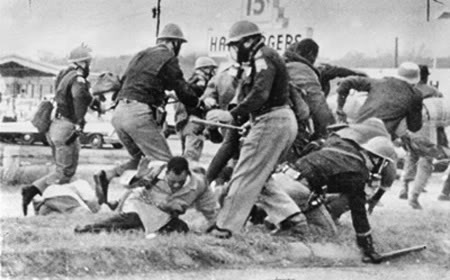
John Lewis was among the injured at Selma’s Edmund Pettus Bridge
The National Park Service provides a lesson on Selma with background on Alabama actions to limit voting as well as images, activities and links to a wide range of resources. John Lewis, currently a US Congressman serving Georgia, headed the Student Nonviolent Coordinating Committee and was injured during “Bloody Sunday” on March 7. The National Archives provides his court testimony requesting National Guard protection for a march that would begin March 21 and includes photos.
Up the road from Selma, the Birmingham Civil Rights Institute draws parallels between the Civil Rights struggles in that city and the ongoing efforts to extend human rights in the video The Front Line. Students will see images of young children under arrest. Under the same Resources section are newspaper front pages from the period. In the Oral History section is Barriers which includes interviews with people who took part in the Alabama protests. The curriculum guide offers several lessons including one on the bombing of the 16th Street Baptist Church in 1963.
Freedom 151 years ago
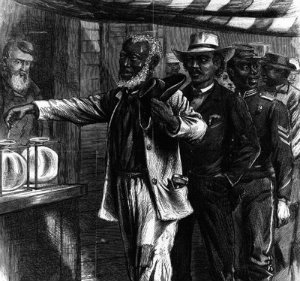 2015 was the 150th anniversary of the end of the Civil War. Students can find a quick overview of how slaves reacted to freedom at A New Birth of Freedom: The Day of Jubilee, a page from Digital History, a project of the College of Education at the University of Houston, which includes lesson plans such as this one on Reconstruction. Also in 1865, with the ratification of the 13th Amendment, ownership of human beings ended in all states though existing black codes were reinforced in 1865 and 1866 to replace the slave codes in Southern states, helping bring on Reconstruction legislation from the US Congress.
2015 was the 150th anniversary of the end of the Civil War. Students can find a quick overview of how slaves reacted to freedom at A New Birth of Freedom: The Day of Jubilee, a page from Digital History, a project of the College of Education at the University of Houston, which includes lesson plans such as this one on Reconstruction. Also in 1865, with the ratification of the 13th Amendment, ownership of human beings ended in all states though existing black codes were reinforced in 1865 and 1866 to replace the slave codes in Southern states, helping bring on Reconstruction legislation from the US Congress.
The Schomburg Center’s Wealth of Resources
The New York Public Library’s Schomburg Center for Research in Black Culture covers much of the African American experience with online multimedia exhibits sure to catch the attention of middle graders. ‘IN MOTION: The African American Immigration Experience’ starts with the immigration of Africans to America as slaves and then studies thirteen migrations, culminating with the influx of sub-Saharan Africans in recent years. In addition to the extensive collection of images, texts, maps and timelines, this 2005 exhibit offers lesson plans, including many for grades 6-8.
At the Schomburg Center’s exhibit, ‘The Abolition of the Slave Trade,’ younger students may find the interactive timeline on the history of abolition of the slave trade — and the interactive map on numbers of slaves departing specific countries and arriving at other countries — most useful. Older students can research the essays, which offer general introductions that lead to more specific topics. The texts section provides extensive primary documents. Overall, this is a visually involving site that provides massive amounts of information in easy-to-access sections.
Another Schomburg exhibit, ‘Lest We Forget: The Triumph over Slavery,’ is also overflowing with interactive materials arranged chronologically. It provides lots of layered clicking opportunities based on themes arranged across the bottom of the page.
‘African Americans and American Politics,’ a Schomburg interactive exhibit from 2009, follows African Americans’ growing participation in American politics with sections for the 18th, 19th, 20th and 21st centuries. Students may need a quick demonstration on how to access the photos and documents, which are accompanied by brief explanations.
In the Center’s ‘Harlem 1900 – 1940’ exhibit, covering the rapid growth of the African American community in New York, students will find advocates, artists, business leaders and politicians. It’s a super source for the Harlem Renaissance. Teachers can click on Main Menu, upper right, to access images and PDFs that explain how to do oral history. The page also links to civic, advocacy and social groups of the early 20th century.
Finally, the Schomburg offers a 2011 exhibit, Africana Age: African & African Diasporan Transformations in th.... Its essays, images, brief videos and maps cover the African diaspora to the US and beyond. Video clips include the voices of W.E.B. DuBois and Marcus Garvey. The essays will interest the upper age range of middle grades students.
Scholastic Highlights the Underground Railroad
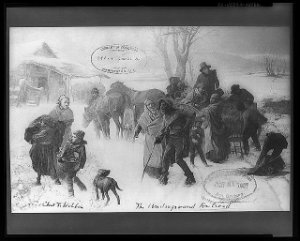 Scholastic helps students understand American slavery and the Underground Railroad with a multi-faceted, highly interactive resource. Through audio and images, slaves held at plantations and traveling north speak for themselves.
Scholastic helps students understand American slavery and the Underground Railroad with a multi-faceted, highly interactive resource. Through audio and images, slaves held at plantations and traveling north speak for themselves.
Accompanying the selected slave narratives are primary resources, mostly photographs plus several documents. Students can also zero in on Harriet Tubman along with Underground Railroad volunteers and abolitionists. Activities include writing letters in code.
Scholastic debunks a long list of generally accepted myths about the Underground Railroad. The site also includes a detailed teacher’s guide. Nearby is Black History Month: Everything You Need which includes a page of suggestions for observing Martin Luther King Day.
Federal Collections
The Library of Congress has assembled a page for teachers featuring images related to African Americans’ experiences and civil rights, arranged in periods from the 1700’s to 1996. Following the long list of image links are resources drawn from the LOC’s American Memory Collection. To access ready-made lesson plans rather than multitudinous resources, visit this LOC selection. Several lessons are suited for 6-8 graders. And take a look at the LOC’s page collecting resources across federal agencies.
Don’t miss EDSITEment’s Guide to Black History Month Teaching Resources from the National Endowment for the Humanities. The site provides educators with over 550 years of the African American experience arranged chronologically.
In the website about its history, the US House of Representativesincludes “Black Americans in Congress” which features profiles of the congressmen and women along with 7-12th grade lessons plans following these members’ participation in the House from 1870 forward. Civil Rights history is provided in oral histories, an outline of Amendments and legislation and other pages.
The US Census: Focus on the 21st Century
For a look at African Americans in the 21st century, students can visit the US Census Bureau’s 2011 report on how people of African descent reported their race in the 2010 Census. The lengthy pdf includes geographical locations and offers opportunities to study graphs and maps. A snapshot of African American culture can be found in the Census “Facts for Features” report prepared for Black History Month in 2016.
The Smithsonian: Civil Rights and American Art
The Smithsonian can help teachers bring art into the study of Black History with its online exhibit, ‘Oh Freedom! Teaching African American Civil Rights through America...
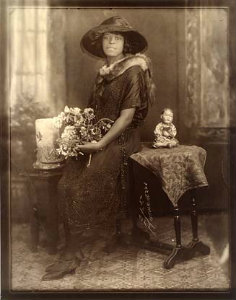 While exploring, don’t miss the interactive timeline covering civil rights in the 20th century which links to artists and artworks, including photographs, in the Smithsonian collection. At the More Resources link, the Smithsonian provides strategies for incorporating art into history and includes graphic organizers, worksheets and lesson plans.
While exploring, don’t miss the interactive timeline covering civil rights in the 20th century which links to artists and artworks, including photographs, in the Smithsonian collection. At the More Resources link, the Smithsonian provides strategies for incorporating art into history and includes graphic organizers, worksheets and lesson plans.
Two of the lesson plans included in the exhibit target middle schoolers: ‘Citizens Making Choices: The Role of the U.S. Constitution in Peac...features the Memphis sanitation workers strike in 1968 and the 1992 LA riots. The other lesson introduces ‘The Many Faces of Civil Rights.’ The Resources page also links to extensive online resources for teachers as well as a detailed glossary. Resources for students are limited to books. Students do have their say in a series of podcasts.
Beyond the Smithsonian, check out media literacy expert Frank W. Baker’s MiddleWeb article on The Visions of Gordon Parks which links the photographer’s artistry to his revelations of the lives of African Americans.
Reading & Writing
For English/Language Arts involvement in Black History Month,READ WRITE THINK offers a page which centers on the month-long National African American Read-In from the Black Caucus of NCTE. The RWT page also includes lesson plans and links to the Library of Congress’ African American Odyssey: A Quest for Full Citizenship and PBS’ African American World.
Reading Rockets, a WETA website, offers video interviews of African American authors and illustrators along with annotated thematic reading lists, activities and links to a long list of resources. Included in the Smithsonian’s Black History Teaching Resourcesis a reading list of stories for students ages ten and up assembled in 1996. CommonSense Media hosts an annotated list of awarding winning books written for the most part since 2005, arranged by reader age.
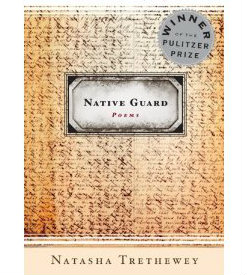 To introduce poetry by African Americans, consider using Elizabeth Alexander’s 2009 Inauguration poem, “Praise Song for the Day,” here. (minute 54:30) For a chronological look into African American poetry, students could contrast Phillis Wheatley, the first black woman poet published in America, and Natasha Trethewey, the 19th US Poet Laureate. Trethewey links the Civil War to present day America in her poem, “Elegy for the Native Guard,’ remembering slaves and freedmen who enthusiastically served the Union. This link provides video of her reading the poem during a trip to Mississippi’s Ship Island where some of the Guard served. It features African American Native Guard re-enactors.
To introduce poetry by African Americans, consider using Elizabeth Alexander’s 2009 Inauguration poem, “Praise Song for the Day,” here. (minute 54:30) For a chronological look into African American poetry, students could contrast Phillis Wheatley, the first black woman poet published in America, and Natasha Trethewey, the 19th US Poet Laureate. Trethewey links the Civil War to present day America in her poem, “Elegy for the Native Guard,’ remembering slaves and freedmen who enthusiastically served the Union. This link provides video of her reading the poem during a trip to Mississippi’s Ship Island where some of the Guard served. It features African American Native Guard re-enactors.
Sciencemakers: Leaders in STEM
The National Science Foundation-funded Historymakers’ collection, Sciencemakers, offers images and interviews of contemporary African American scientists and mathematicians. Teachers could adapt one aspect of the Sciencemakers page: encouraging students to create speeches or videos imagining themselves as future scientists or as scientists of the past or present. Historymakers also hosts collections of text interviews with hundreds of African American leaders in education, the military, the law, music, and other categories. Through a subscription service Historymakers sells videos of the interviews.
As part of its Black History Month resources, Science NetLinks offers ‘The Faces of Science: African Americans in the Sciences.’ The brief biographies of the scientists, engineers and mathematicians are organized by profession and cover past and present. Other resources at the Science NetLinks page look into skin color.
For students interested in space travel, NASA provides brief bios of current and past black astronauts. In 2011 Leland Melvin, a former astronaut who also worked as an engineer, chemist, musician, NFL player, and NASA educator, explained the history of African Americans in flight. In a 2015 NPR “My Big Break” interview, Melvin recalls his journey to becoming an astronaut and being part of the team taking the US into space. He is currently hosting Lifetime’sChild Genius, a competition with 8 to 12 year olds.
Debating Black History Month
A recurrent discussion among educators and other Americans is whether racial and ethnic groups – African Americans, Latinos and Asians, for example – should be singled out for annual observations of their cultures. African Americans discuss whether Black History Month should continue to be observed in a five-minute PBS news segment from 2012.
For a longer treatment of the questions about celebrating Black History Month, visit Independent Lens’ page on African American filmmaker Shukree Hassan Tilghman’s documentary, ‘More than a Month.’ Aired on PBS in 2012, the film follows Tilghman as he begins by soliciting signatures to end Black History Month and then goes on to present differing points of view.
The Independent Lens page provides several clips. Clip 3 returns to Carter G. Woodson, the creator of the annual observance, and goes on to discuss the impact of politics on how history is taught in American schools. The page includes an interview with Tilghman which can show students the challenges of making a documentary. The comments following the interview give a cross-section of attitudes toward Black History Month.
In Black History Month Has Been an Epic Failure, a Huffington Post article, journalist Dion Rabouin faults teachers and proponents of Black History Month in the United States for failing to heed Malcolm X’s message: “Our history did not begin in chains.” Rabouin goes on to recount many great achievements by Black people in world history which he contends are given short shrift in American history lessons.
Current Events
Writing in During Black History Month, helping students understand their role ..., teacher-author Jose Vilson shares a class discussion following the decision not to indict Darren Wilson for the shooting of Michael Brown and considers the value of Black History Month for his diverse students. His essay was written for the PBS Newshour and posted Feb. 18, 2015. Some comments at the end are racist.
Find the Dos and Don’ts of Teaching Black History, Four Black History Month Must-Haves and Mining the Jewel of Black History Month (for a teacher’s evolution in bringing the month to class) at the Southern Poverty Law Center’s Teaching Tolerance. The center also provides resources to help students understand implicit bias and systemic racism amid reports of deaths of black teens and adults at the hands of police and others and the growth of the #BlackLivesMatter movement.
More Valuable Resources
The New York Times Learning Network has updated it collection of resources, Celebrate Black History Month. It includes free access to historic front pages, news stories, lesson plans, and lots more.
6 Edtech Tools for Black History Month Get fresh ideas for exploring Black History from writer/educator Irvin Weathersby in this Edutopia post: a “location-enabled app highlights sites of significance to black history,” a database tracing the TransAtlantic slave trade, podcast guidelines from the Smithsonian, and others.
For more, visit Larry Ferlazzo’s Best Websites To Teach & Learn About African-American History.
Art and photo credits:
Carter G. Woodson: US Office for Emergency Management. Office of War Information. Domestic Operations. Branch. News Bureau. (06/13/1942 – 09/15/1945)
Selma: Library of Congress, Prints & Photographs Division, NYWT&S Collection, LC-USZ62-1277321st
Vote for African Americans: Waud, Alfred R. (Alfred Rudolph). “The First Vote.” Nov. 16, 1867, from Harper’s Weekly. Prints and Photographs Division, Library of Congress.
Underground Railroad: Library of Congress, Prints & Photographs Division, [reproduction number, LC-USZ62-28860]
Evening Attire: James VanDerZee (1886–1983), Evening Attire, 1922, gelatin silver print, 10 x 8 in., Smithsonian American Art Museum
Leland Melvin: NASA/Carla Cioffi
